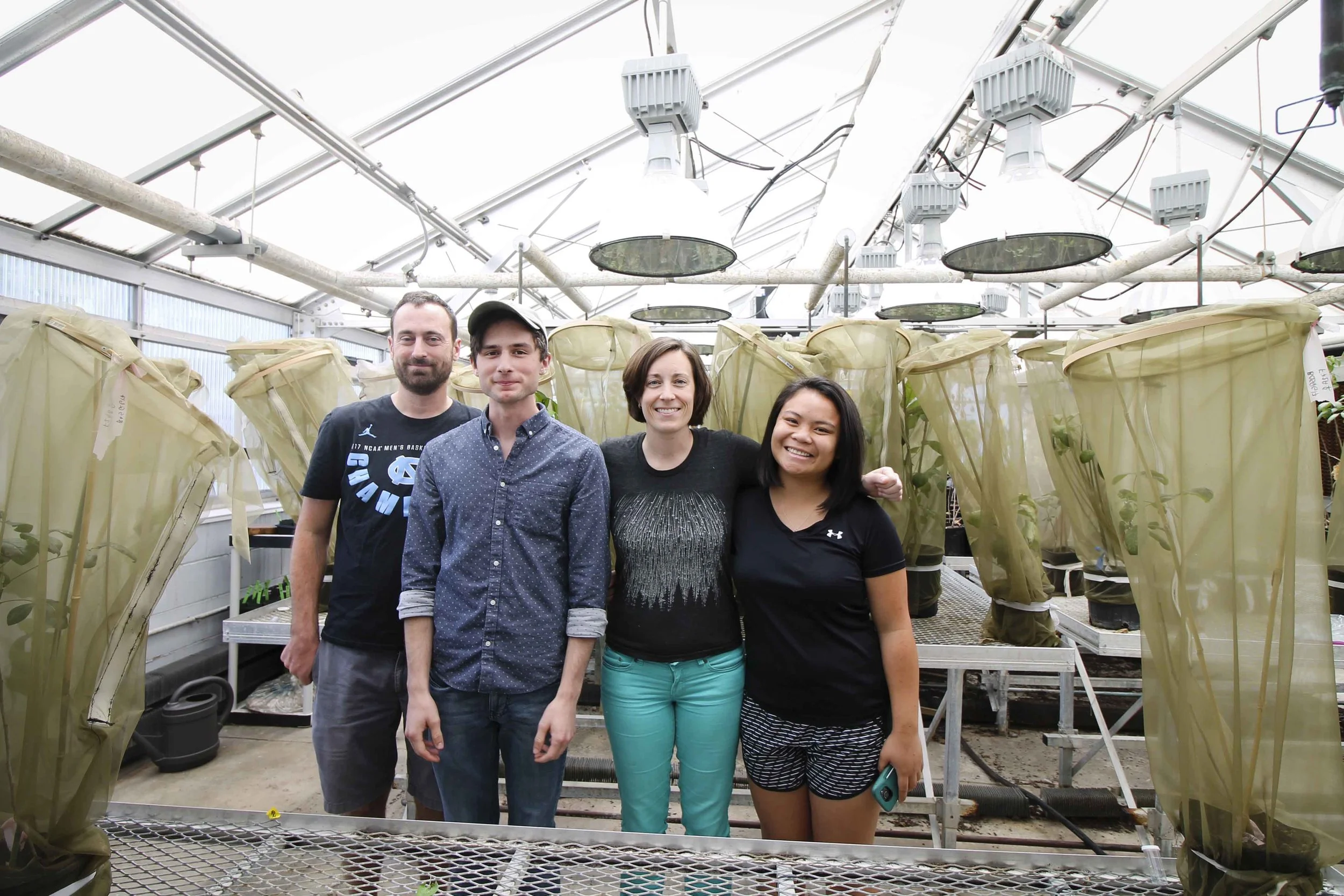Photo: Emily Hutti
Abstract
Many animals exhibit social plasticity – changes in phenotype or behaviour in response to experience with conspecifics that change how evolutionary processes like sexual selection play out. Here, we asked whether social plasticity arising from variation in local population density in male advertisement signals and female mate preferences influences the form of sexual selection. We manipulated local density and determined whether this changed how the distribution of male signals overlapped with female preferences – the signal preference relationship. We specifically look at the shape of female mate preference functions, which, when compared to signal distributions, provide hypotheses about the form of sexual selection. We used Enchenopa binotata treehoppers, a group of plant-feeding insects that exhibit natural variation in local densities across individual host plants, populations, species and years. We measured male signal frequency and female preference functions across the density treatments. We found that male signals varied across local social groups, but not according to local density. By contrast, female preferences varied with local density – favouring higher signal frequencies in denser environments. Thus, local density changes the signal–preference relationship and, consequently, the expected form of sexual selection. We found no influence of sex ratio on the signal–preference relationship. Our findings suggest that plasticity arising from variation in local group density and composition can alter the form of sexual selection with potentially important consequences both for the maintenance of variation and for speciation.
Download the full article HERE
Cite the article:
Fowler-Finn, K. D., Cruz, D. C. and Rodríguez, R. L. (2017), Local population density and group composition influence the signal-preference relationship in Enchenopa treehoppers (Hemiptera: Membracidae). J. Evol. Biol., 30: 13–25. doi:10.1111/jeb.12994


